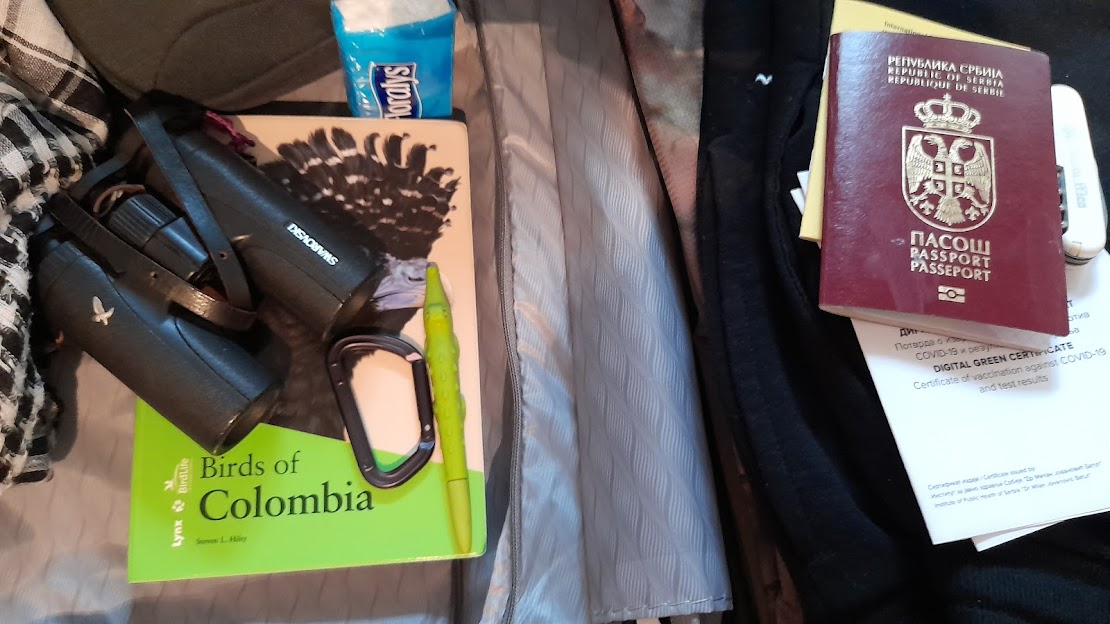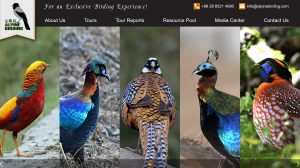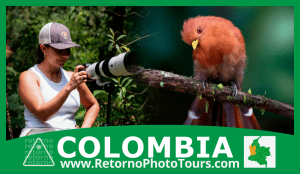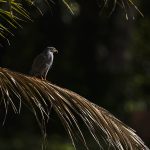
This post was originally published on March 11, 2021. It is republished in our “From the Archives” series, featuring highlights of our vast back catalogue of more than 10,000 birding-related posts published over the last 15 years or so.
When was the last time you travelled for birding? Since the Covid-19 era, I have become a patch birder. On rare occasions I do visit some other areas, but when I hang binoculars around my neck, even without a second thought I head for Beljarica backwaters. It offers the richest pickings in Belgrade, especially with the incoming spring, but I must admit, the thing I miss the most is travelling and birding overseas.
And in the times when lockdown is the word of the year, I am not sure how much sense it makes to write about packing for a birding trip. Whatever, here I go.
The first thing is obviously a pair of binoculars. Normally, I’d take my standard (and lightweight) 8s, plus a scope. But, in the rainforests of e.g. Central America, a scope is – most of the time – a total waste of space and weight. During a week in Costa Rica, I used it only twice. It would make more sense and I would feel much more comfortable if I took only the 8s. Leaving the scope behind means leaving the tripod at home and the tripod is possibly the single bulkiest equipment item.
Camera, too, is a must-have, but I don’t like the idea of exchanging a bulky scope for an overweight DSLR camera. I should get myself a new one, and I am eyeing the Olympus OM-D E-M1 Mark series (I hope that company will survive this period, otherwise we would be stuck with huge Nikon or oversized Canon, without much difference between them). A backup camera, clearly, is my phone, and I should finally master the use of a scope adapter with binoculars, where I always miss having a third hand (it is easier with a scope, where a tripod acts as a third hand).
Then, a torch for owling and a headlamp for finding one’s way around the lodge in the dark. Whenever possible, I’d leave my laptop at home and opt for a digital detox. Back to the phone, it is important for navigation, too, as well as for a bird ID app, especially calls and songs. Some birders might consider a voice recorder and a speaker (but I prefer not to use playback). Don’t forget all the cables, chargers, backup batteries and international electrical adapters!
The field guide I always bring as a paper book, and there’s no substitute for snooping through the pages. Also a field notebook and pens. And with these few items, birding equipment is mostly covered.
Let me summarise this:
• binoculars
• scope and tripod
• camera
• mobile phone and scope adapter
• torch
• headlamp
• laptop
• voice recorder
• speaker
• cables, chargers, backup batteries and electrical adapters
• field guide
• field notebook and pens
We all dream of travelling lightweight, but rarely succeed in it. Noah Strycker’s tactic to take only one piece of a carry-on sized luggage is almost perfect for tropical destinations, although I take two: one smallish carry-on sized suitcase that gets checked-in, one carry-on sized rucksack that travels with me (about 40 l, for optics, important medication and a basic change of clothes in case I am flying to Johannesburg, South Africa, but my luggage goes to Munich, Germany), plus a multi-pocket vest.
Optics is never checked-in and it always travels with me. And the field guide stays in my vest pocket, so I can go through it on an outbound flight (and try to memorise some more details of the common birds, plus a few targets) as well as the inbound flight (when I work through my tour list).
I would usually study the travel guide prior to the trip and then leave it at home (perhaps photograph a few pages to have them in my phone). Again, I prefer paper over e-books.
Other than birding equipment, I’ll bring a hat, a bandana or two, sunscreen, refillable water bottle, mosquito repellent, pocket knife (I am thinking of downsizing to Victorinox Super Tinker, and should remember to pack it into a checked-in luggage – it was a painful lesson at the Athens airport, Greece), 4-5 metres of a prusik (a thin climbing rope) and a carabiner or two, lightweight plastic compass, rain poncho (some lodges provide those for their guests, so check in advance whether you need to carry your own), sleeping-bag liner (but not the sleeping bag: in under-developed countries, not all accommodation is up to western hygiene standards) and a roll of 3-ply toilet paper.
Do not forget passport, credit and ATM cards or cash. I see no point in mentioning shoes or clothes, no one ever forgets that and if a particular shirt still ends up forgotten, you can do without. I usually make a checklist of what to pack using the Universal Packing List (since 1996) at https://upl.codeq.info
Bon voyage.













I have been thinking about this exact activity. I am leaving on an overseas trip in two days. I have set aside tomorrow for the major wrap-up packing. I won’t be taking scope or tripod, voice recorder, speaker or laptop. The rest mostly, yes. The airline I am flying on only allows one carry-on. Mine will include camera, bins and some small essentials. This means I will also need to check a bag. So, I try make this a small checked bag and pack it as smartly as possible. Somehow I always manage, but it also always ends up seeming like a lot. I think packing well for a birding trip is difficult and, dare I say, probably gender and age specific. True enough, birders are not going to the opera, a museum a day or to fine dining restaurants, so things needed for those activities can be left off the list, but birding requires a lot of accouterments that are highly specific and often heavy. As my own past experiences suggest and this article supports, packing is a challenge.
I particularly hate being forced to carry some warm clothing when going to the tropics, either because it’s winter in Europe and I need it for the airports and in between flights, or I will be going to cloud forests which will shock all my ideas of the tropics.
As a frequent traveller I have got packing for a trip down to a fine art. I have a compact Swarovski travel scope, an equally compact but very effective carbon-fibre tripod, 8×32 binoculars and an Olympus (OM series) camera (Om-1) with 100-400mm lens. That’s the heavy stuff. I also take an iPad Pro with key board. I calculate exactly what clothes I will need, and take shirts that can be washed easily but don’t need ironing. I can easily do a two-week trip to, say, India, with carry-on luggage only. Winter trips to cold climates are more of a challenge, as of course I need more warm clothes.
The advance of carry-on luggage is that the airline can’t lose your bag.